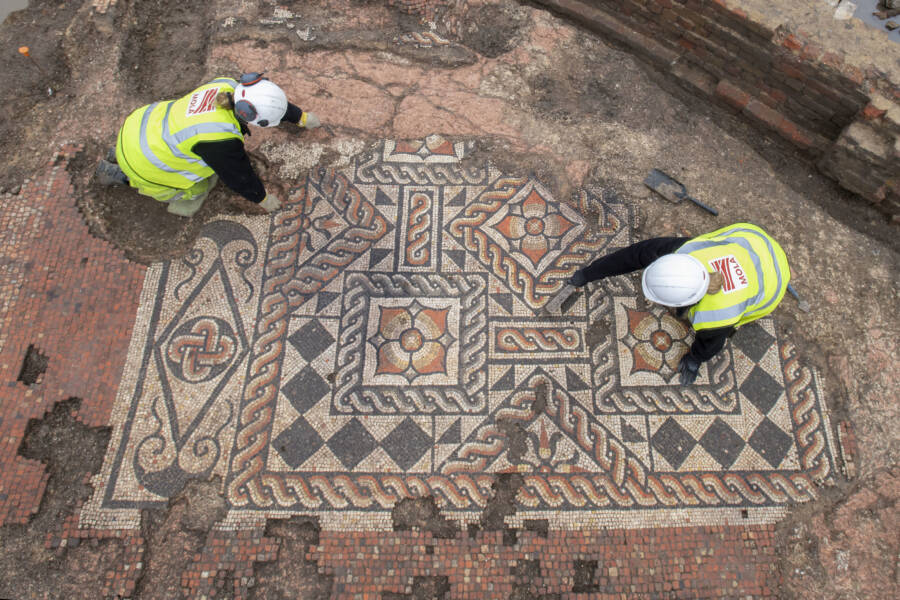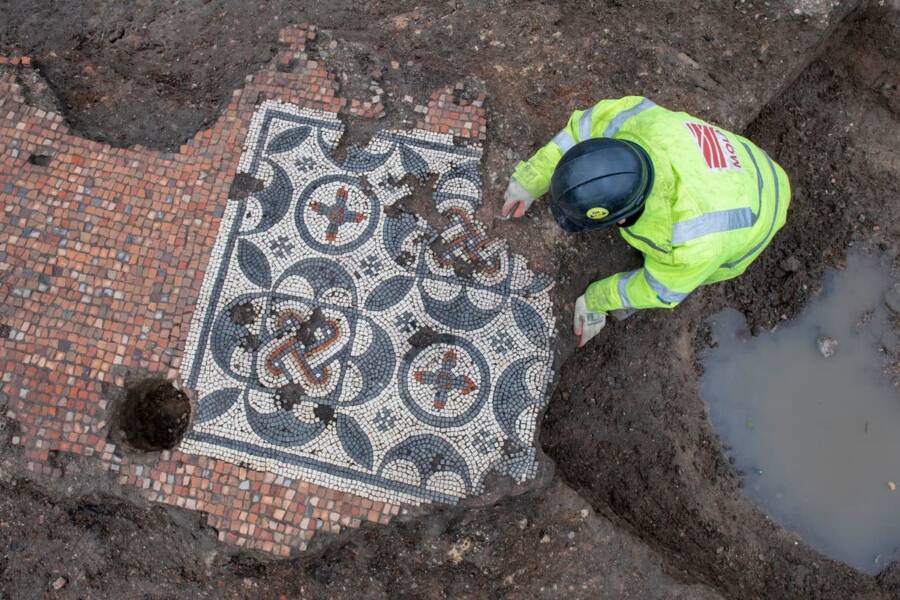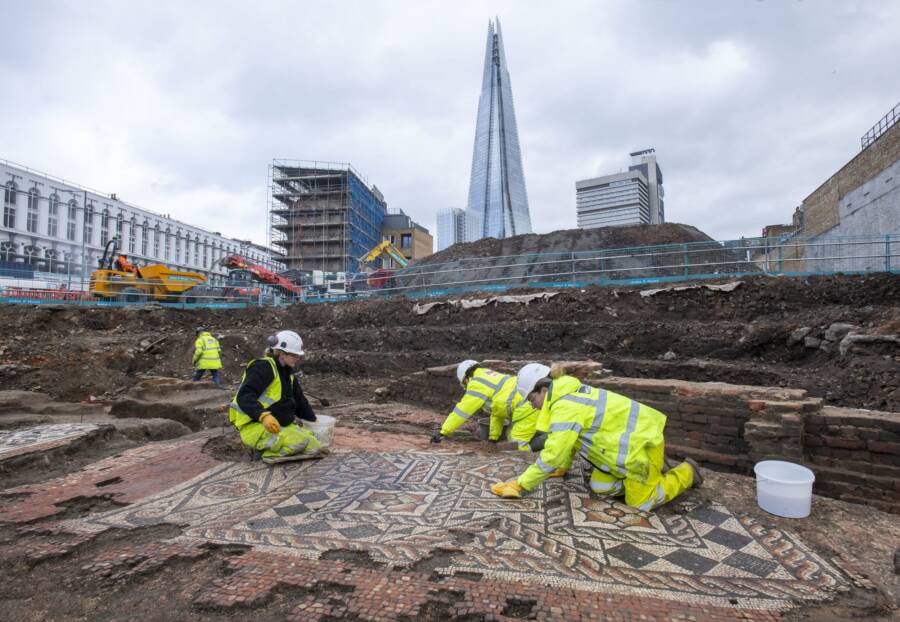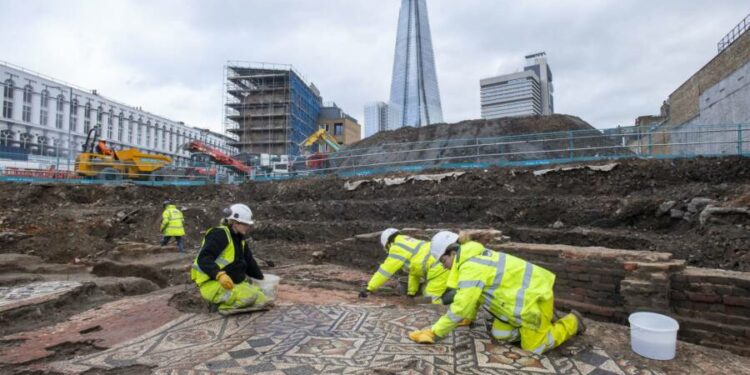This mosaic, which is made up of two incredibly complex panels, is the largest to be discovered in London in over half a century.
Archaeologists are working hard to unearth a recently discovered mosaic in center London.

“This is the most impressive find in London,” said Antonietta Lerz, site supervisor for the Museum of London Archeology (MOLA).
While excavating a new housing and retail development near the London Bridge at the Liberty of Southwark site, MOLA archeologists found the mosaic. Something drew their attention as they dug through the dirt.
“Everyone on site was excited when the first sparks of color began to emerge through the soil” Lerz explained.
The archaeologists finally discovered a Roman mosaic made up of two panels that are larger more than 26 feet. The bigger panel features lotus blossoms, a “Solomon’s knot” motif, and guilloche (intertwined strands). The smaller panel is simpler, but it features some of the same red and black tile motifs. Historians have seen mosaics like this before.

Both mosaics were most likely part of a triclinium, a type of formal dining room where upper-class ancient Romans would have sat on couches, chatted, and admired the lovely floor.
The triclinium was most likely part of a mansion, a type of inn for Roman officials on official business who needed a place to relax, keep their horses, and dine. Archaeologists believe it was part of a larger complex, but they’re currently investigating the site.
MOLA archeologists discovered not only the mosaics. They also found evidence of a big building nearby, which could have been the private residence of a wealthy Roman. An ornate metal brooch, a bone hairpin, and a sewing needle were found there.
“These discoveries are linked to high-status ladies who followed the latest fashions and hairstyles,” Lerz noted, adding that they lived during the “heydey of Roman London.”
“The structures on this location had a high rank.” The people who lived here seemed to have a good life”
Londinium, or Roman London, was founded in 47 C.E. It grew significantly over the first century, reaching its peak in the second century. Londinium had a population of 45,000 to 60,000 people at the time.
It was Roman Britannia’s greatest city, with a forum, basilica, bathhouses, temples, and other amenities found in busy Roman cities. The mosaics near The Shard are a stunning relic from that era.

“We are committed to preserve the heritage of all of our regeneration sites, so it’s fantastic that could have found a beautiful and culturally significant specimen in the heart of London that will now be conserved for future generations to enjoy.”
Lerz and her team hope to preserve and display the magnificent mosaics in the future.
“We’re working with Southwark Council to find an appropriate building to display them. We hope that everyone can enjoy this beauty.” She said.
For now, the Roman mosaics are being excavated within a three-minute walk from London’s dazzling Shard.
Learn about the valuable Roman mosaic that spent 50 years as a coffee table in New York City after reading about the enormous Roman mosaics located in central London. Then, discover the most amazing ancient Rome facts.























